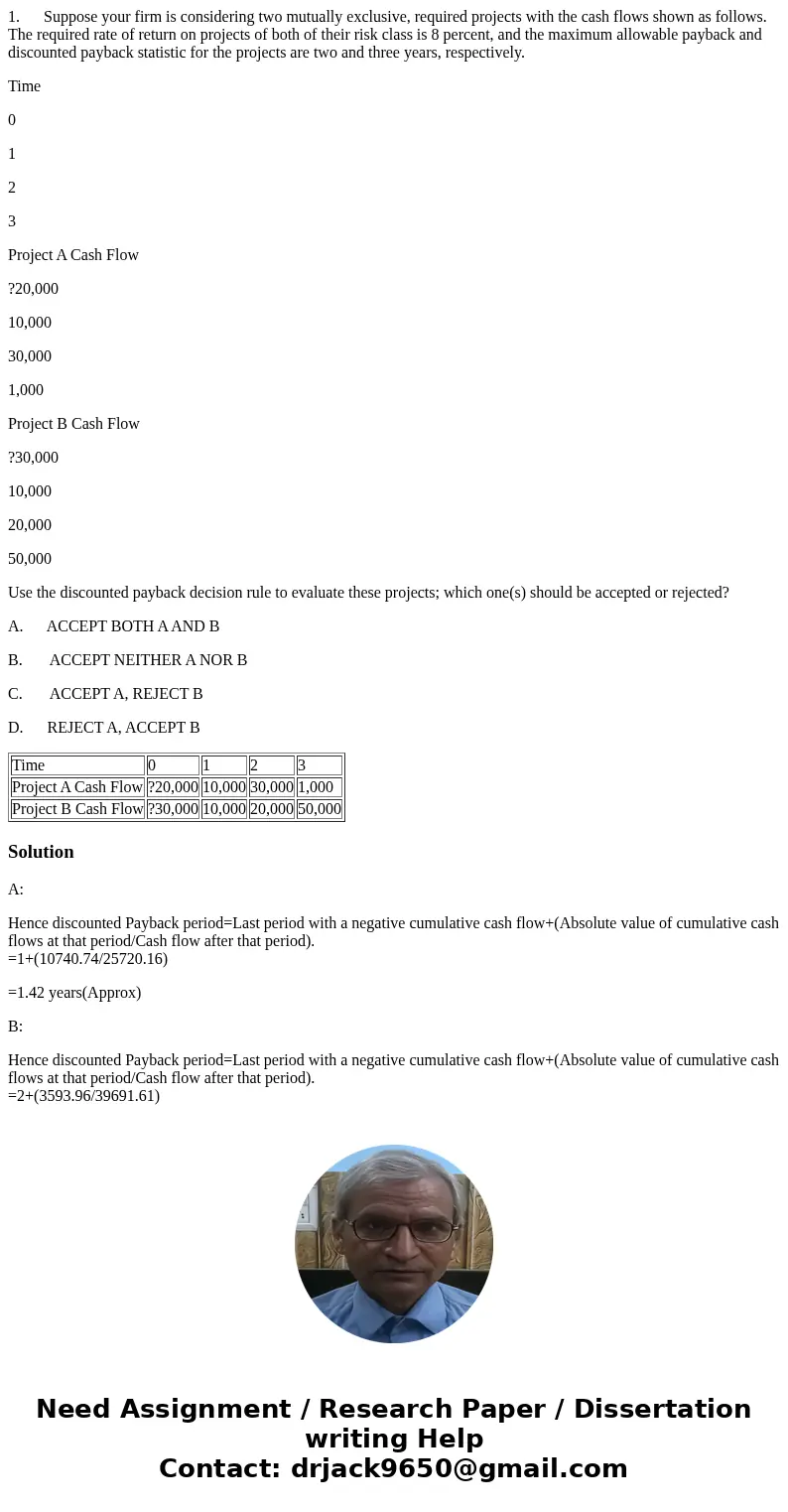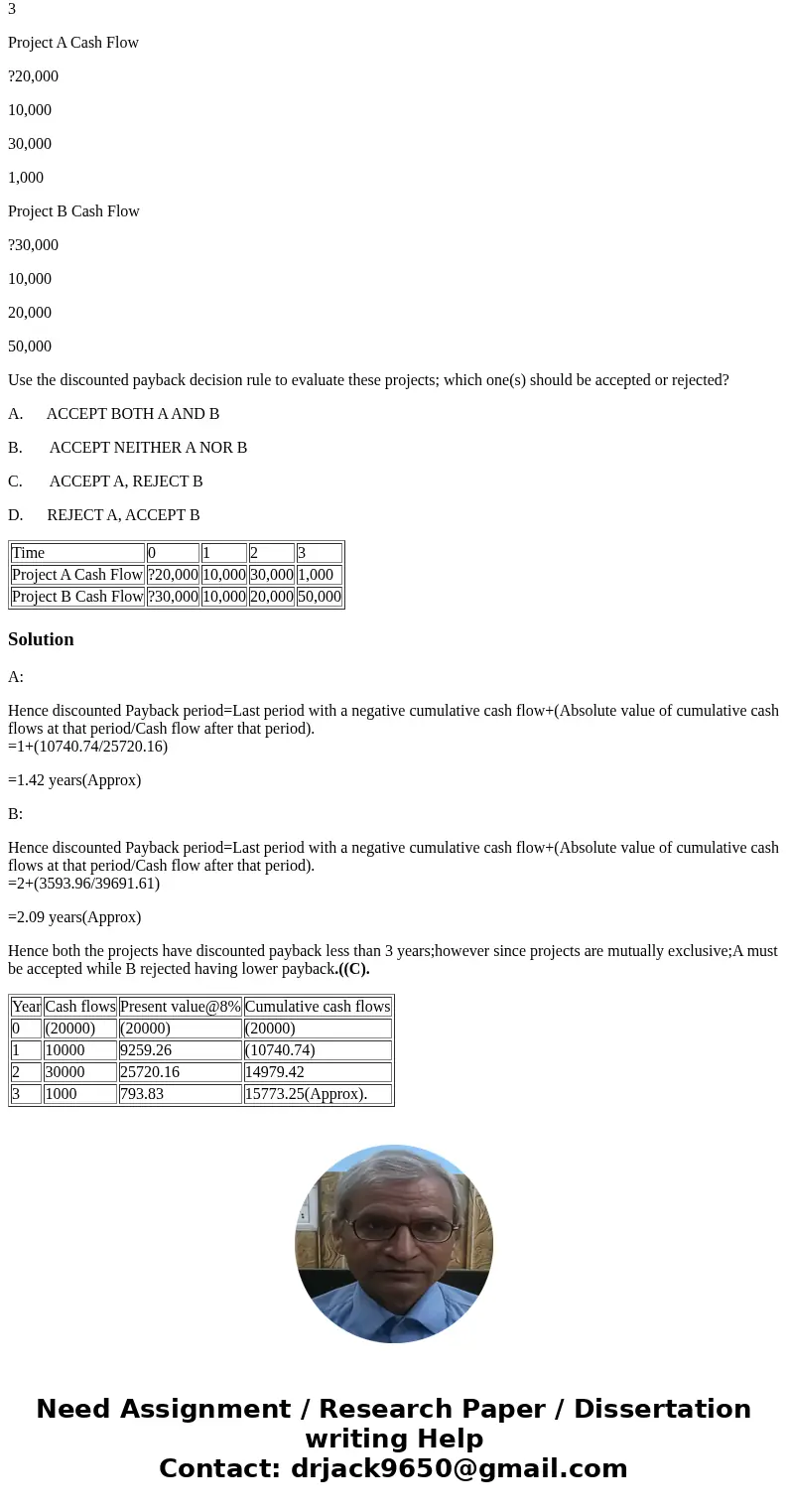1 Suppose your firm is considering two mutually exclusive re
1. Suppose your firm is considering two mutually exclusive, required projects with the cash flows shown as follows. The required rate of return on projects of both of their risk class is 8 percent, and the maximum allowable payback and discounted payback statistic for the projects are two and three years, respectively.
Time
0
1
2
3
Project A Cash Flow
?20,000
10,000
30,000
1,000
Project B Cash Flow
?30,000
10,000
20,000
50,000
Use the discounted payback decision rule to evaluate these projects; which one(s) should be accepted or rejected?
A. ACCEPT BOTH A AND B
B. ACCEPT NEITHER A NOR B
C. ACCEPT A, REJECT B
D. REJECT A, ACCEPT B
| Time | 0 | 1 | 2 | 3 |
| Project A Cash Flow | ?20,000 | 10,000 | 30,000 | 1,000 |
| Project B Cash Flow | ?30,000 | 10,000 | 20,000 | 50,000 |
Solution
A:
Hence discounted Payback period=Last period with a negative cumulative cash flow+(Absolute value of cumulative cash flows at that period/Cash flow after that period).
=1+(10740.74/25720.16)
=1.42 years(Approx)
B:
Hence discounted Payback period=Last period with a negative cumulative cash flow+(Absolute value of cumulative cash flows at that period/Cash flow after that period).
=2+(3593.96/39691.61)
=2.09 years(Approx)
Hence both the projects have discounted payback less than 3 years;however since projects are mutually exclusive;A must be accepted while B rejected having lower payback.((C).
| Year | Cash flows | Present value@8% | Cumulative cash flows |
| 0 | (20000) | (20000) | (20000) |
| 1 | 10000 | 9259.26 | (10740.74) |
| 2 | 30000 | 25720.16 | 14979.42 |
| 3 | 1000 | 793.83 | 15773.25(Approx). |


 Homework Sourse
Homework Sourse